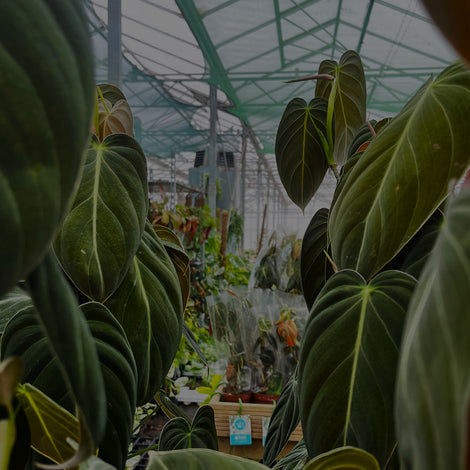Anthurium vs Alocasia
Anthurium and Alocasia plants are closely related tropical plants that share a lot of characteristics such as large leaves with a similar shape, and similar growth habits. It can be difficult for new plant growers to tell the difference between the two, but with the right knowledge, it can be easy.
In this guide, we will give you all the information you need to tell the difference between an Anthurium and an Alocasia.
What is a Anthurium?
The Anthurium is one of the most diverse plant varieties in the world with over 1000 known species. They are native to the tropical rainforests of Central and Southern America and thrive in warm, humid conditions that have bright, indirect light. Due to the varied environments found in rainforests, you will find a lot of variations between Anthuriums in both growth habit, colour and size.
What is an Alocasia?
Native to South America. Asia and Oceana, the Alocasia is a popular houseplant that is prized for its large, showy leaves. There are around 80 known species of Alocasia that display a wide range of colours in their flowers.
Similarities between anthurium and Alocasia
Leaf size - Like most other tropical houseplants, both the Anthurium and Alocasia are known for having large, broad leaves that have been known to grow up to 12ft in length. The foliage on both plants can come in a variety of shapes and colours.
Flowers - Both the Anthurium and Alocasia have unique looking flowers that consist of a spadix and spathe. The spadix is a long and thin stem of flowers whilst the spathe is a leaf-like sheath that surrounds the spadix and closes around it at night. These unique flowers can come in many colour combinations and are always a delight to see in the home.
Growing conditions - Both plants prefer bright, indirect light and require heat and humidity to thrive. The Alocasia and Anthurium are not frost hardy plants so should only be kept as houseplants in the UK
Soil type - It is best to grow Alocasia and Anthurium plants in soil that has lots of organic matter in it. This will simulate the rich rainforest soil, and provide lots of nutrients to the plant. Add 50% perlite to the soil to improve the drainage. These plants both love wet soil, but it must be well-draining to prevent root rot. Make sure the soil is light and that your container has enough drainage holes in it.
What are the differences between Anthurium and Alocasia?
Leaf shape - The best way to tell these two plants apart is by looking at the shape of the leaves: Alocasias have arrow-shaped foliage, whilst Anthuriums have oval, heart-shaped, or spatula-shaped leaves.
Leaf growth habit - The way the foliage grows is another method to tell the difference between these species. Alocasia leaves are more upright; They often have distinct veins that contrast in colour to the rest of the leaf. Anthurium leaves tend to droop more, and do not have prominent coloured veins.
Roots - Most people will try to identify a plant by its leaves or flowers, but looking at the roots is also an effective method of identification. Alocasia have thin roots that grow out of a bulb. Anthurium roots are thicker, fleshier, and more fibrous.
Spathe thickness - Alocasia flowers have a thin spathe that covers the spadix. Anthuriums have a thicker, fleshier spathe that grows perpendicular to the spadix, leaving it exposed.
Petioles - The petiole is the stalk that attaches the leaf to the stem. Checking them is a reliable way to tell an Anthurium from an Alocasia. In Alocasia, they grow straight from the centre of the plant. In Anthuriums, they grow as offshoots from the stems.
Take a look at our full range of Alocasia Plants and Anthurium Plants.























Leave a comment
Please note, comments need to be approved before they are published.